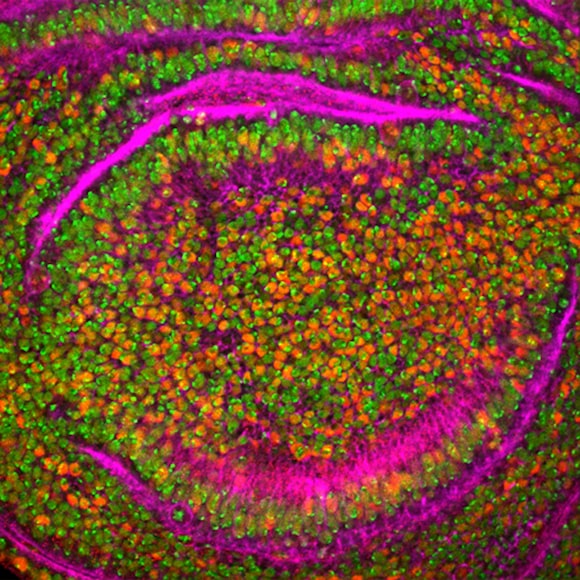High-Protein Foods for Dogs

Introduction
Protein is an essential macronutrient for dogs, supporting a wide range of bodily functions. A high-protein diet can promote muscle growth, maintain a healthy weight, and support cognitive development. In this article, we will explore the benefits of high-protein foods for dogs and provide a list of excellent protein sources.
Benefits of High-Protein Foods for Dogs
- Promotes Muscle Growth and Repair: Protein is essential for building and repairing muscle tissue, especially in active dogs or those with muscle injuries.
- Maintains a Healthy Weight: High-protein diets can help dogs feel full and satisfied, reducing the likelihood of overeating and weight gain.
- Supports Cognitive Development: Protein is needed for brain development and function. High-protein diets may support cognitive health in senior dogs.
- Provides Essential Amino Acids: Protein contains essential amino acids that the dog’s body cannot produce on its own. These amino acids are crucial for a variety of bodily processes.
Best High-Protein Foods for Dogs
- Lean Meats: Beef, chicken, turkey, and fish are excellent sources of protein for dogs.
- Organs: Liver and other organ meats are rich in protein and nutrients.
- Cottage Cheese: A mild, low-fat protein source that can be mixed with food.
- Eggs: Whole eggs provide complete protein and are a good source of other nutrients.
- Greek Yogurt: High in protein and low in lactose, making it suitable for dogs with sensitive stomachs.
- Beans and Lentils: Plant-based protein sources that are high in fiber and low in fat.
- Salmon: Rich in protein, omega-3 fatty acids, and antioxidants.
- Quinoa: A complete protein grain that is also a good source of fiber.
- Chicken and Rice: A classic combination that provides a balance of protein and carbohydrates.
- Canned Tuna: A convenient and inexpensive source of protein.
Feeding Recommendations
The amount of protein a dog needs depends on factors such as age, size, and activity level. Consult with your veterinarian to determine the optimal protein intake for your dog.
Conclusion
High-protein foods play a vital role in the health and well-being of dogs. By incorporating these protein-rich sources into your dog’s diet, you can support their muscle growth, maintain their weight, and promote their overall health. Remember to consult with your veterinarian for personalized feeding recommendations.
Essential Amino Acids

Protein is a crucial nutrient for dogs, providing essential building blocks for muscle development, repair, and tissue maintenance. Among the various amino acids that make up proteins, there are ten that are considered “essential” for dogs, meaning they cannot be produced by the body and must be obtained from the diet.
Importance of Essential Amino Acids
Essential amino acids play vital roles in the following canine functions:
- Muscle growth and repair: Amino acids like leucine, valine, and isoleucine are essential for building and repairing muscle tissue.
- Energy production: Amino acids such as arginine and histidine contribute to energy metabolism.
- Immune function: Some essential amino acids, such as lysine and methionine, are involved in immune system responses.
- Cognitive development: Tryptophan, an essential amino acid, is a precursor to serotonin, a neurotransmitter that promotes relaxation and mood regulation.
Sources of Essential Amino Acids
Essential amino acids can be obtained from both animal and plant-based proteins.
Animal Sources:
- Lean meats (e.g., chicken, turkey, beef, lamb)
- Fish (e.g., salmon, tuna, sardines)
- Eggs
- Dairy products (e.g., cheese, yogurt)
Plant Sources:
- Legumes (e.g., lentils, peas, beans)
- Soy products (e.g., tofu, tempeh)
- Quinoa
- Buckwheat
- Chia seeds
Combination Sources:
To ensure a complete amino acid profile, it is recommended to feed dogs a combination of animal and plant-based proteins. Commercial dog foods typically contain a balanced blend of these sources.
Conclusion
Essential amino acids are indispensable for dogs’ health and well-being. By providing your furry friend with high-protein foods rich in these vital nutrients, you can support optimal muscle development, energy levels, immune function, and cognitive health. Remember to consult with a veterinarian to determine the appropriate protein content and amino acid balance for your dog’s specific needs.
Animal Protein Sources

Protein is an essential macronutrient that plays a vital role in your dog’s overall health and well-being. It helps build and repair tissues, create enzymes, and supports a healthy immune system. While there are many sources of protein available for dogs, animal proteins are considered the most complete and digestible.
Meat
Meat is a rich source of high-quality protein for dogs. It contains all essential amino acids, making it an excellent dietary option. Common types of meat used in dog food include:
- Beef: Beef is a highly palatable protein source that is easy to digest. It is a good choice for dogs of all ages and activity levels.
- Chicken: Chicken is another easily digestible protein source that is often used in dog food. It is a good choice for dogs with sensitive stomachs.
- Pork: Pork is a good source of protein that is also rich in vitamins and minerals. It is important to ensure that pork is thoroughly cooked before feeding it to your dog.
Fish
Fish is another excellent source of high-quality protein for dogs. It is rich in omega-3 fatty acids, which are essential for maintaining a healthy skin and coat. Common types of fish used in dog food include:
- Salmon: Salmon is a nutritious fish that is high in protein and omega-3 fatty acids. It is a good choice for dogs with allergies or skin problems.
- Tuna: Tuna is another high-protein fish that is a good source of omega-3 fatty acids. It is important to feed tuna in moderation, as it can be high in mercury.
- Mackerel: Mackerel is a smaller, oily fish that is a good source of protein and omega-3 fatty acids. It is a good choice for dogs who are prone to weight gain.
Eggs
Eggs are a high-quality, easily digestible protein source for dogs. They are a good source of essential amino acids, vitamins, and minerals. However, it is important to feed eggs in moderation, as they can be high in cholesterol.
Conclusion
Animal protein sources are an essential part of a healthy diet for dogs. They provide complete and easily digestible protein that is vital for their overall health and well-being. When choosing a dog food, be sure to look for one that contains high-quality animal protein sources, such as those listed above.
Plant Protein Sources

Protein is an essential nutrient for dogs, supporting their muscle development, repair, and overall well-being. While animal-based proteins are a great source, plant-based alternatives can also provide your canine companion with a high-quality protein intake.
Legumes (Beans, Peas, Lentils)
Legumes are a powerhouse of plant-based protein, containing all the essential amino acids. They are also rich in fiber, which supports a healthy digestive system. Some common types of legumes suitable for dogs include:
- Beans (black beans, kidney beans)
- Peas (split peas, green peas)
- Lentils (brown lentils, red lentils)
Soy
Soy is another excellent source of plant-based protein. It is highly digestible and contains isoflavones, which have antioxidant and anti-inflammatory properties. However, it is important to use soy products specifically formulated for dogs, as some human soy products contain additives that can be harmful.
Quinoa
Quinoa is a gluten-free grain that is packed with protein, fiber, and essential vitamins. It is also a good source of antioxidants and has a low glycemic index, making it suitable for dogs with diabetes or weight management concerns.
Incorporating Plant-Based Protein into Your Dog’s Diet
When introducing plant-based protein into your dog’s diet, it is essential to do so gradually to avoid digestive upset. Start by mixing small amounts of cooked legumes, soy, or quinoa into your dog’s regular food.
It is important to note that plant-based proteins often have lower bioavailability than animal-based proteins. This means that your dog may need to consume more plant-based protein to meet their nutritional needs.
Benefits of Plant-Based Protein for Dogs
In addition to being a great protein source, plant-based proteins offer several benefits for dogs:
- Reduced environmental impact: Plant-based protein production requires significantly less land, water, and energy compared to animal-based protein production.
- Lower risk of allergies: Some dogs may be allergic to animal proteins, making plant-based alternatives a safe option.
- Potential health benefits: Plant-based proteins are often rich in antioxidants, fiber, and other nutrients that support overall health.
Conclusion
Plant-based protein sources such as legumes, soy, and quinoa can be a nutritious and environmentally friendly addition to your dog’s diet. By gradually incorporating them into your dog’s food, you can provide your canine companion with a balanced and high-protein intake. Remember to consult with your veterinarian if you have any concerns or questions regarding your dog’s nutritional needs.
Benefits of High-Protein Diets

As a dog owner, you want to provide your furry friend with the best possible nutrition. A high-protein diet can offer numerous benefits for dogs of all ages and activity levels. Here are some of the key advantages of incorporating more protein into your dog’s meals:
Muscle Development and Maintenance
Protein is essential for building and maintaining muscle mass. Dogs that engage in regular exercise, such as working dogs, sporting breeds, and active pets, have increased protein requirements to support muscle development and recovery. A high-protein diet helps promote strong and lean muscles, which are crucial for mobility, performance, and overall well-being.
Weight Management
Protein is highly satiating, meaning it makes dogs feel fuller for longer. This can help prevent overeating and weight gain. High-protein diets promote a healthy weight by reducing hunger and helping dogs maintain a lean body composition. Overweight or obese dogs may benefit from a diet with increased protein content.
Energy Levels
Protein is a primary source of energy for dogs. When dogs consume high-quality protein, it is broken down and converted into glucose to power their activities. A diet rich in protein helps sustain energy levels throughout the day, making dogs more lively and active.
Choosing High-Protein Foods for Dogs
When selecting high-protein foods for your dog, it is important to consider the quality of the protein source. Animal proteins, such as chicken, beef, fish, and lamb, are complete proteins that contain all the essential amino acids dogs need. Look for foods that have a high concentration of these animal proteins listed as the first few ingredients.
Transitioning to a High-Protein Diet
Transitioning your dog to a high-protein diet should be done gradually over a period of several days to avoid digestive upset. Start by mixing a small amount of the new high-protein food with their regular food and gradually increase the proportion until they are fully transitioned. Monitor your dog closely for any changes in their appetite, digestion, or behavior.
Conclusion
A high-protein diet can provide numerous benefits for dogs, including muscle development, weight management, and sustained energy levels. By incorporating more high-quality protein into your dog’s meals, you can help them maintain a healthy and active lifestyle. Consult with your veterinarian to determine the optimal protein content for your dog’s individual needs.
Protein Requirements
As a pet blogger specializing in high-protein foods for dogs, it’s crucial to understand the varying protein needs of canine companions. Protein plays a vital role in maintaining muscle mass, synthesizing hormones and enzymes, and supporting overall health. However, the optimal protein intake can vary significantly depending on factors such as age, breed, and activity level.
Varying Protein Needs
- Puppies: Growing puppies require a higher protein intake of around 22-32% of their diet to support their rapid growth and development.
- Adult Dogs: Adult dogs typically need a lower protein intake of around 18-25% of their diet to maintain muscle mass and meet their energy demands.
- Senior Dogs: As dogs age, their protein requirements may decrease slightly to around 15-20% of their diet due to a slower metabolism and reduced activity levels.
- Working Dogs: Dogs engaged in strenuous activities, such as agility, sledding, or herding, require a higher protein intake of around 25-30% of their diet to support muscle repair and recovery.
- Certain Breeds: Some breeds, such as Siberian Huskies and German Shepherds, have higher protein requirements due to their active nature and dense fur coats.
Determining Appropriate Protein Intake
To determine the appropriate protein intake for your dog, consider the following guidelines:
- Read Food Labels: Most commercial dog foods will list the protein content percentage on the packaging.
- Consult Your Veterinarian: Your vet can provide personalized advice based on your dog’s specific age, breed, and activity level.
- Observe Your Dog’s Condition: Monitor your dog’s body weight, muscle mass, and energy levels. If you notice significant changes, adjust the protein intake accordingly.
Excess Protein: Risks and Considerations
While a high-protein diet can be beneficial for dogs with increased needs, it’s important to avoid excessive intake. Excess protein can:
- Strain the Kidneys: Overworking the kidneys can lead to kidney problems in the long run.
- Contribute to Dehydration: Protein can be dehydrating, so ensure your dog has access to plenty of fresh water.
- Increase Calorie Intake: High-protein foods often have higher calorie content, which can lead to weight gain if not managed properly.
Conclusion
Determining the appropriate protein intake for your dog is essential for their overall health and well-being. By considering factors such as age, breed, and activity level, you can ensure your furry companion receives the optimal amount of protein to maintain muscle mass, support vital functions, and thrive throughout their life. Remember to consult with your veterinarian for personalized advice and monitor your dog’s condition to make any necessary adjustments to their diet.
Commercial Dog Foods
Introduction
Protein is an essential macronutrient for dogs, playing a crucial role in numerous bodily functions, including muscle development, tissue repair, and immune system support. When choosing dog food, it’s important to opt for those with high-protein content to ensure your pet’s nutritional needs are met.
High-Protein Commercial Dog Food Options
Commercial dog food brands offer a wide range of high-protein options to suit different breed sizes, ages, and activity levels. Some popular brands include:
- Purina Pro Plan Sport Performance 30/20: This formula contains 30% protein and 20% fat, making it ideal for active and working dogs.
- Royal Canin Maxi Adult: Designed for large breeds, this food provides 26% protein to support muscle mass and joint health.
- Blue Buffalo Wilderness Salmon Recipe Adult: A grain-free option with 38% protein, suitable for dogs with sensitive stomachs or allergies.
- Hill’s Science Diet Adult Perfect Digestion: This formula offers 26.8% protein and is highly digestible, promoting optimal nutrient absorption.
- Taste of the Wild Ancient Grains Salmon & Sweet Potato: Containing 32% protein, this food includes ancient grains and probiotics for digestive health.
Reading and Understanding Dog Food Labels
When selecting dog food, carefully read the ingredient list and nutritional information panel. The protein content should be listed as a percentage on the guaranteed analysis section. Here are some key tips to consider:
- Look for “real meat” or “meat meal” as the first ingredient, as these provide high-quality protein sources.
- Avoid foods with plant-based proteins as their primary source, as dogs require meat-based protein for optimal health.
- Check the calorie content to ensure the food meets your dog’s energy needs, especially if they are active or have weight management issues.
- Consider the dog’s age, size, and activity level when selecting food with appropriate protein levels.
Conclusion
Choosing a high-protein commercial dog food is essential for meeting your pet’s nutritional requirements. By carefully reading and understanding dog food labels, you can make an informed decision that supports their overall health, vitality, and well-being. Consult with your veterinarian for personalized recommendations based on your dog’s specific needs.
Homemade Diet Considerations
Providing a homemade diet for your dog can be a rewarding experience, offering greater control over the ingredients and nutritional content. However, it’s essential to carefully plan and prepare homemade meals to ensure they meet your dog’s specific nutritional needs.
Balancing Protein Sources
Dogs require a complete amino acid profile to maintain optimal health. Different protein sources provide different amino acid profiles. Therefore, it’s important to provide a variety of high-protein foods to ensure your dog receives all the essential amino acids.
Some excellent high-protein sources for dogs include:
- Lean meats (chicken, beef, turkey)
- Fish (salmon, herring, mackerel)
- Eggs
- Cottage cheese
- Greek yogurt
Nutritional Adequacy
In addition to providing sufficient protein, a homemade diet must also meet all your dog’s other nutritional requirements. This includes carbohydrates, fats, vitamins, and minerals. It’s crucial to research and identify foods that provide these nutrients in the appropriate ratios.
Consider the following guidelines:
- Carbohydrates: Brown rice, sweet potatoes, and oatmeal are good sources of complex carbohydrates.
- Fats: Healthy fats from sources such as olive oil, fish oil, or coconut oil provide energy and support brain health.
- Vitamins and Minerals: Include fruits, vegetables, and organ meats to provide a spectrum of vitamins and minerals.
Safety Considerations
Certain foods can be harmful or even toxic to dogs. It’s essential to avoid:
- Raw meat: Raw meat can contain harmful bacteria such as Salmonella and E. coli.
- Onions and Garlic: These vegetables are toxic to dogs and can cause anemia.
- Grapes and Raisins: These fruits can cause kidney failure in dogs.
How to Ensure Nutritional Adequacy
To ensure your dog’s homemade diet is nutritionally adequate, it’s recommended to consult with a veterinary nutritionist or certified pet nutritionist. They can analyze your dog’s individual needs and provide a tailored plan that meets all their dietary requirements.
Conclusion
Providing a homemade diet for your dog can be beneficial if done correctly. By carefully balancing protein sources, ensuring nutritional adequacy, and avoiding harmful foods, you can create a nutritious and tailored meal plan that supports your pup’s health and well-being. Always consult with a veterinary professional to ensure you are meeting your dog’s specific nutritional needs.
Caution and Considerations
While high-protein foods can provide numerous benefits for dogs, it’s crucial to approach these diets with caution and consider potential risks.
Potential Digestive Issues:
High-protein diets can strain the digestive system of some dogs, especially those with sensitive stomachs. The excessive consumption of protein can lead to:
- Gas and bloating
- Diarrhea or constipation
- Vomiting
If your dog experiences any digestive issues after switching to a high-protein diet, it’s recommended to consult with your veterinarian.
Monitoring for Allergies and Sensitivities:
Some dogs may be allergic or sensitive to specific protein sources. Introducing high-protein foods into a dog’s diet should be done gradually while monitoring for any adverse reactions. Signs of allergies or sensitivities can include:
- Skin irritation (itching, redness)
- Ear infections
- Digestive problems
- Respiratory issues
If you suspect your dog may have an allergy or sensitivity to a particular protein, it’s essential to eliminate that protein from their diet and consult with your veterinarian for appropriate testing and treatment.
Additional Considerations:
- Age and Health Status: Puppies and senior dogs may have different protein requirements than adult dogs. It’s recommended to consult with your veterinarian to determine the appropriate protein intake for your dog’s age and health condition.
- Activity Level: Active dogs may require higher protein levels to support muscle maintenance and repair. However, sedentary dogs may not benefit from excessive protein intake.
- Diet Transition: Gradually introduce high-protein foods into your dog’s diet to allow their digestive system to adjust. Start with a small amount and gradually increase over several days to weeks.
Conclusion:
High-protein foods can be beneficial for dogs, but it’s important to approach these diets with caution. Monitor your dog for any digestive issues or allergies, adjust protein intake as needed based on age, health, and activity level, and transition gradually to avoid any adverse effects. By following these guidelines, you can provide your furry friend with a balanced and nutritious diet that supports their overall well-being.




















